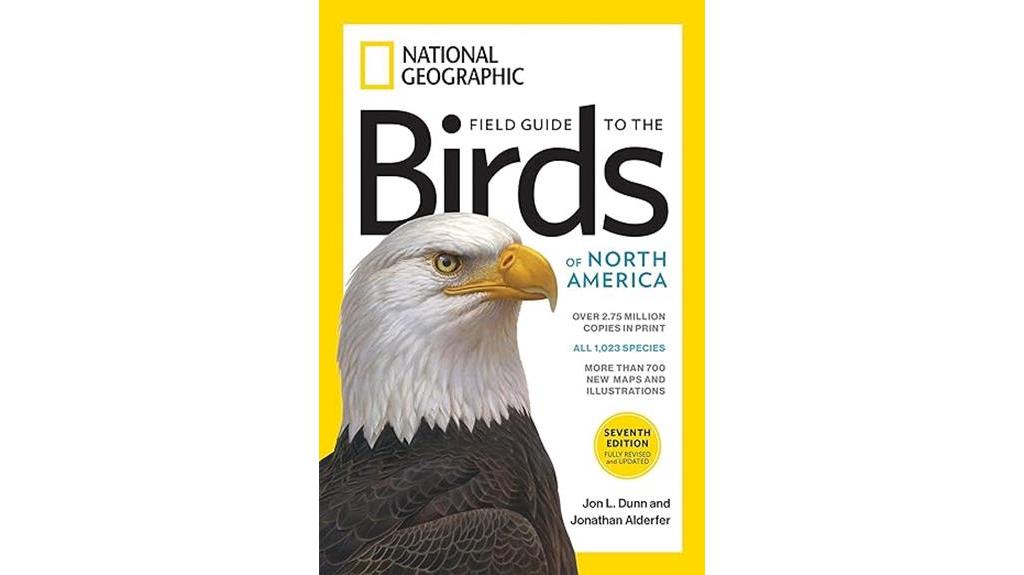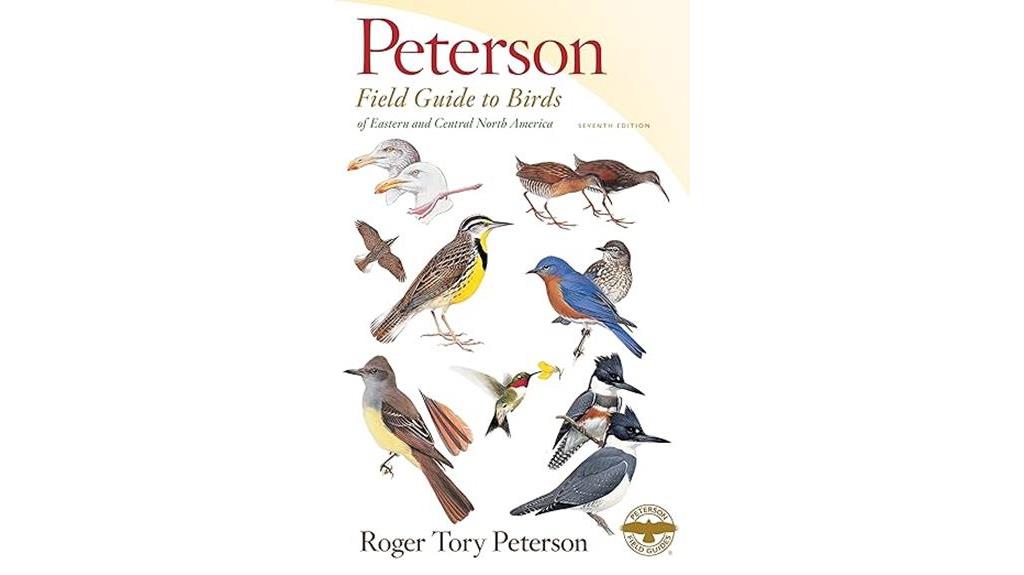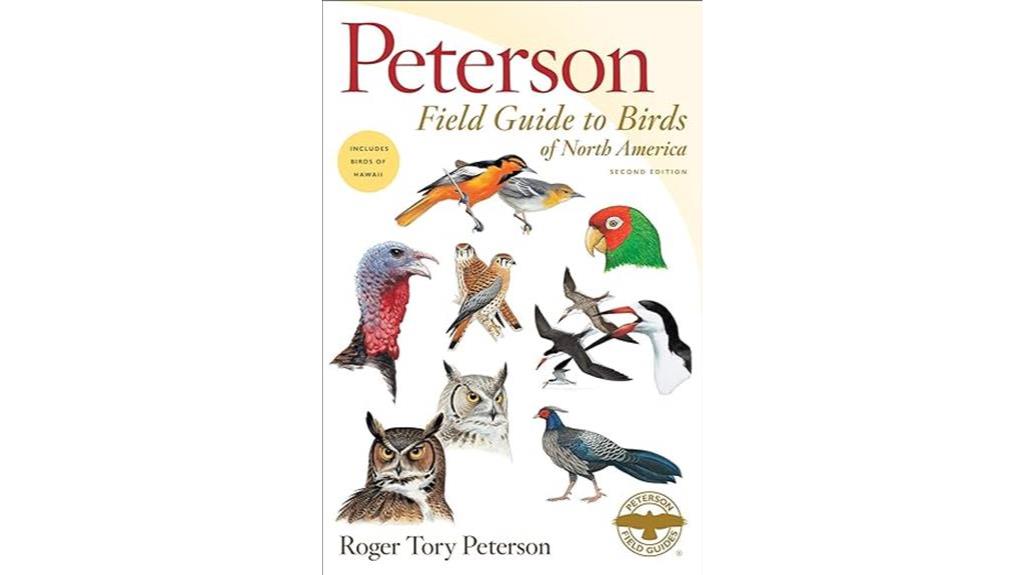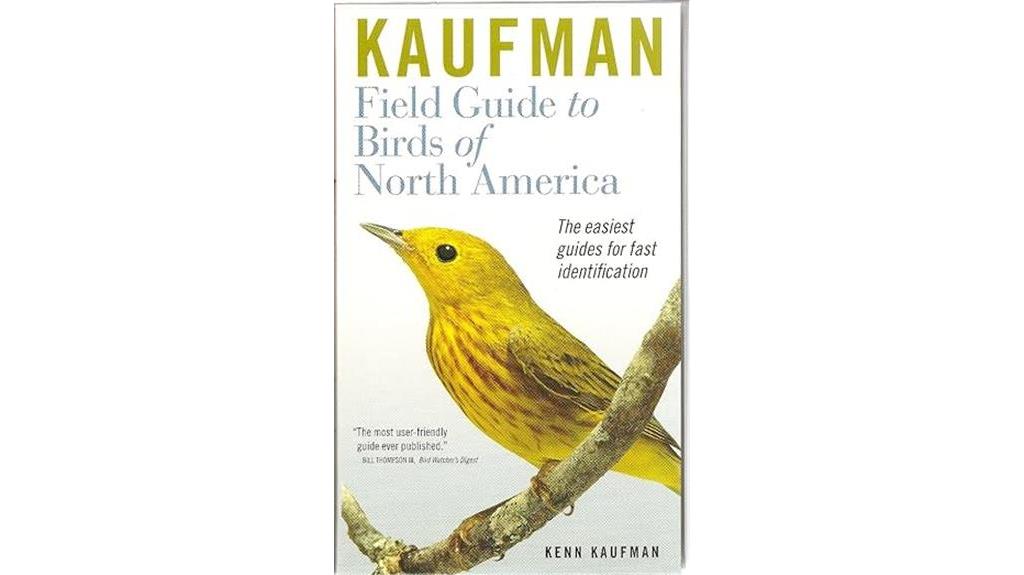This blog contains affiliate links. As part of afiiliate networks and as an Amazon Associate, I earn from qualifying purchases. If you make a purchase through these links, I may earn a small commission at no additional cost to you. I only recommend products and services that I believe in and have personally used or researched. Your support helps me continue to provide quality content—thank you!
You’re about to take your bird-watching skills to the next level with the right field guide. From regional guides like Peterson Field Guide To Birds Of Western North America to exhaustive guides like The Sibley Guide to Birds, 2nd Edition, we’re here to support you. Whether you’re a beginner or an expert, there’s a guide that fits your needs. Humorous guides like The Field Guide to Dumb Birds of North America add a twist to the traditional guide. With factors like region and expertise level in mind, you’re one step closer to identifying those feathered friends. Keep exploring to find the perfect guide for your next adventure.
Key Takeaways
- Consider the level of experience and expertise of the intended user when selecting a bird field guide, as some guides cater to beginners or experts.
- Regional guides focus on specific areas or habitats, providing unique species and adaptations information tailored to that region.
- Comprehensive guides cover all North American bird species, while beginner-friendly guides offer a well-organized and easy-to-use format.
- Humorous guides provide an entertaining take on bird-watching, making them a standout with quirky writing style and artwork.
- The purpose of the guide determines the type of information and level of detail included, so choose a guide that aligns with your birding goals.
National Geographic Field Guide to the Birds of North America, 7th Edition

If you’re a new birder looking for a thorough and portable guide, the National Geographic Field Guide to the Birds of North America, 7th Edition, is an excellent choice, providing a wealth of accurate information and stunning color photography in a compact package.
You’ll appreciate the concise text that clearly sets out diagnostic features, making it easier to identify species.
The guide includes 967 species, including extinct ones, and the pictures are very helpful and accurate.
You’ll also find the range guides quite good, although remember that ranges aren’t written in stone.
With its convenient size and easy-to-use format, this guide is perfect for taking with you on your birding adventures.
Plus, the quick find index on the back cover flap and thumbtabs make it easy to navigate.
Best For: New birders looking for a thorough and portable guide.
Pros:
- Provides a wealth of accurate information and stunning color photography in a compact package.
- Concise text clearly sets out diagnostic features, making it easier to identify species.
- Convenient size and easy-to-use format, with a quick find index and thumbtabs for easy navigation.
Cons:
- Paperback format may not be sturdy enough for rugged use.
- Some illustrations, like the Northern Cardinal, have muddy and dull colors.
- No European version available yet.
Peterson Field Guide To Birds

When you’re looking for a field guide that combines stunning illustrations with practical identification tools, the Peterson Field Guide To Birds is the perfect companion for your bird-watching adventures.
You’ll appreciate the beautifully painted illustrations that highlight distinctive field marks, making it easier to identify species.
The durable book is designed to withstand the elements, with a water-resistant coating and sturdy construction that can withstand rain and wet fingers.
As you venture into the field, you’ll find the guide’s logical system and clear descriptions help you narrow down your search and identify birds with confidence.
With its thorough coverage and user-friendly design, the Peterson Field Guide To Birds is an excellent resource for beginners and seasoned birders alike.
Best For: Beginners and experienced birders alike who want a comprehensive and user-friendly field guide to help them identify birds with confidence.
Pros:
- The guide features beautiful, detailed paintings that highlight distinctive field marks, making it easier to identify species.
- The book is durable and designed to withstand the elements, with a water-resistant coating and sturdy construction.
- The logical system and clear descriptions help users narrow down their search and identify birds with confidence.
Cons:
- None mentioned in the provided text.
Peterson Field Guide To Birds Of North America

Are you looking for a thorough guide that’s easy to use, even for beginners, and packed with helpful drawings, maps, and descriptions to help you identify birds with confidence?
The Peterson Field Guide To Birds Of North America is an excellent choice. You’ll appreciate its perfect size and format, making it easy to carry on your bird-watching adventures.
The guide is well-organized and easy to navigate, with separate sections for aging gulls, Empidonax Flycatchers, and overhead views of raptors, shorebirds, and gulls.
Beautiful and detailed illustrations, along with an arrow system and highlighted key field marks, will help you identify birds quickly.
Additionally, you’ll find helpful information on bird songs and recordings, as well as a section on how to identify birds.
Best For: Beginner bird watchers and experienced ornithologists alike who need a comprehensive and easy-to-use guide to identify birds in North America.
Pros:
- Easy to use, even for beginners, with helpful drawings and maps that aid in swift identification
- Comprehensive and inclusive, covering a wide range of bird species and including additional information on bird songs and recordings
- Well-organized and easy to navigate, with separate sections for specific bird types and a life list included in the book
Cons:
- Range maps are too small, making it difficult to accurately identify bird habitats
- Inaccurate range map for Broad-tailed Hummingbird, which may lead to misidentification
- Some errors in species identification, such as kites and accipiters, which may confuse users
National Audubon Society Field Guide to Birds

Identifying birds with ease becomes a breeze with the National Audubon Society Field Guide to Birds, a valuable tool perfect for beginners and seasoned birders alike, offering clear pictures and concise descriptions that make it a standout choice for those seeking a user-friendly guide.
You’ll appreciate the beautiful book’s great price, making it an excellent addition to your porch or backpack.
Many users have found it to be very informative, well-illustrated, and easy to carry.
While some critics argue that the guide’s format, with separate picture and text sections, can be inconvenient, most users rave about its usefulness in identifying birds in their area.
Overall, you’ll find the National Audubon Society Field Guide to Birds to be a brilliant, reliable companion for your birdwatching adventures.
Best For: Beginners and seasoned birders alike who want a user-friendly guide for identifying birds in their area.
Pros:
- Valuable tool for bird identification with clear pictures and concise descriptions
- Beautiful book at a great price, making it an excellent addition to your porch or backpack
- Very informative, well-illustrated, and easy to carry, making it a brilliant companion for birdwatching adventures
Cons:
- The photographs are separated from the text, which can be an odd choice in modern publishing
- The text pages are dictionary thin and almost translucent, making them not very durable in the field
- The paper is prone to absorbing water and wrinkling, which can be a problem in certain environments
Kaufman Field Guide to Birds of North America

If you’re new to birding, the Kaufman Field Guide to Birds of North America is an excellent choice, offering a well-organized and portable resource that’s perfect for beginners.
You’ll appreciate its compact size, durable design, and intuitive layout, making it easy to navigate and identify species.
The guide features clear photographs of birds, including males, females, and juveniles, along with range maps and field mark pointers.
As a beginner, you’ll find the introduction to birding and advice on binoculars and bird feeders particularly helpful.
With its conversational writing style and emphasis on ease of use, this guide is a great companion for your birding adventures.
Best For: New birders and beginners who want a comprehensive and portable guide to identifying birds in North America.
Pros:
- Easy to use and navigate, even for novice birders
- Well-organized and portable, making it perfect for field use
- Features clear photographs, range maps, and field mark pointers to aid in species identification
Cons:
- Photos are decent but not excellent
- Not as comprehensive as other guides, but still useful
- May not be suitable for experienced birders who require more advanced information
Peterson Field Guide To Birds Of Western North America

With its exhaustive coverage and meticulous illustrations, the Peterson Field Guide To Birds Of Western North America is the perfect companion for experienced birders seeking to refine their identification skills.
You’ll appreciate the multiple views of the same bird, showcasing variations in plumage for summer versus winter, or juvenile versus adult.
The images are annotated with arrows pointing out key features and differences, making it easy to distinguish between similar species.
With a section dedicated to hawks as seen from below, and another on birds from Hawaii, this guide is a treasure trove of information.
You’ll also appreciate the introductory pages on what to look for in classifying birds, beautifully illustrated with pointers to key differentiating features.
This guide is an excellent value for the money, and its compact size makes it easy to carry on your birding adventures.
Best For: Experienced birders seeking to refine their identification skills.
Pros:
- Excellent pictorial guide with a superabundance of information and beautifully illustrated with pointers to key differentiating features.
- Highly recommended for birders with more in-depth experience, providing good value for the money.
- Easy to use, compact in size, and rugged enough to last a long time, making it perfect for carrying on birding adventures.
Cons:
- Lewis Woodpeckers are not mentioned in this guide, a minor shortcoming.
- The fifth edition lacks plate tabs, a feature present in the second edition.
- No other significant drawbacks mentioned in the reviews.
Sibley Field Guide to Birds of Eastern North America

You’ll likely find the Sibley Field Guide to Birds of Eastern North America to be the best choice if you’re a beginner or experienced birdwatcher seeking a thorough and portable guide that provides exceptionally detailed illustrations and descriptions to help you accurately identify birds in the field.
With its excellent artwork, quality binding, and abundance of information, this guide is a must-have for anyone serious about birdwatching.
The detailed pictures and descriptions, including regional maps and multiple plumage types for male and female birds, make it easy to compare and identify similar birds.
Plus, its compact size makes it easy to take with you on excursions, and its practical design guarantees it won’t be a hindrance.
Best For: Beginners and experienced birdwatchers seeking a thorough and portable guide to accurately identify birds in the field.
Pros:
- Excellent artwork, quality binding, and abundance of information make it a comprehensive guide for bird identification.
- Compact size makes it easy to take on excursions without being a hindrance.
- Detailed pictures and descriptions, including regional maps and multiple plumage types for male and female birds, make it easy to compare and identify similar birds.
Cons:
- Some users find the print and pictures too small, especially for older readers.
- The text can be too small for some users, making it difficult to read.
- Some users suggest digitizing the book as a cellphone app with interactive features.
The Sibley Guide to Birds, 2nd Edition (Sibley Guides)

As an avid birder, you’ll find the Sibley Guide to Birds, 2nd Edition, an indispensable resource, offering unparalleled depth and accuracy in its thorough coverage of North American bird species.
You’ll appreciate the expanded information on identification, behavior, and distribution, as well as the updated range maps and increased illustrations per species.
Although the initial printing had issues with font and color accuracy, the author has acknowledged these problems and corrected them in the second printing.
You’ll notice richer colors and clearer text in the new printing, making it a significant improvement over the first edition.
With its detailed and accurate information, excellent illustrations, and clean layout, this guide is a must-have for anyone interested in North American birds.
Best For: Avid birders, researchers, and anyone interested in North American birds.
Pros:
- Offers unparalleled depth and accuracy in its thorough coverage of North American bird species
- Provides expanded information on identification, behavior, and distribution
- Features updated range maps and increased illustrations per species
Cons:
- Initial printing had issues with font and color accuracy
- Not very portable due to its size
- Classification of species at the end of the book is not very user-friendly
The Field Guide to Dumb Birds of North America

If you’re looking for a humorous take on bird-watching, The Field Guide to Dumb Birds of North America is the perfect choice, offering a lighthearted, entertaining spin on traditional field guides.
This book is hilarious, and you’ll find yourself chuckling at the very least, if not laughing out loud.
The author’s quirky sense of humor and fantastic writing style make this guide a standout.
The artwork is entertaining, and the silly descriptions give each bird its own unique personality.
You might even find yourself buying it as a gift for your bird-loving friends and family, as many readers have done.
Just keep in mind that it’s not an exhaustive guide, and you might need to supplement it with a more traditional field guide.
Best For: Bird enthusiasts looking for a humorous take on traditional field guides, or as a gift for bird-loving friends and family.
Pros:
- Offers a hilarious and entertaining spin on traditional field guides
- Features quirky writing style and entertaining artwork that gives each bird its own unique personality
- Makes a great gift for bird enthusiasts who appreciate humor
Cons:
- Not an exhaustive guide, may need to be supplemented with a more traditional field guide
- May not be suitable for younger readers due to language
- Not a replacement for a full field guide, lacking in species coverage
Sibley Birds West Field Guide

Whether you’re a seasoned birder or just starting out, the Sibley Birds West Field Guide is the perfect companion for anyone seeking a concise yet thorough guide to identifying Western North American bird species.
This compact book provides detailed descriptions of each bird, accompanied by stunning illustrations that are both accurate and beautiful.
You’ll appreciate the concise format, accessible to beginners, which provides just the right amount of information to get started.
The guide includes a checklist in the back to keep track of birds you’ve seen, and its layout is well-organized and easy to use.
With its stunning illustrations, helpful information, and concise format, the Sibley Birds West Field Guide is a must-have companion for birdwatching.
Best For: Beginners and experienced birders alike who want a concise and thorough guide to identifying Western North American bird species.
Pros:
- Highly recommended for anyone interested in birdwatching, with captivating illustrations and helpful information.
- Provides just the right amount of information to get started, with brief yet informative descriptions of each species.
- Has a well-organized and easy-to-use layout, with a checklist in the back to keep track of birds seen.
Cons:
- No cons mentioned in the provided text.
Factors to Consider When Choosing Bird Field Guides
As you start searching for the perfect bird field guide, you’ll want to think carefully about several key factors to guarantee you find one that meets your needs.
You’ll need to ponder whether it’s for casual birdwatching or in-depth species identification.
Field Guide Purpose
When choosing a bird field guide, you should consider the purpose it will serve, as this determines the type of information and level of detail included.
Are you a beginner looking for a guide to help you identify common species, or are you an experienced birder seeking in-depth information on rarer species? Perhaps you’re a scientist conducting research, a conservationist working on a project, or an educator teaching students about birds.
Whatever your purpose, you must select a guide that meets your needs.
If you plan to use your guide for casual backyard birding, a more general guide might suffice.
However, if you’re heading out on a backpacking trip, you’ll need a compact and rugged guide that can withstand the elements.
If you’re focused on a specific region or habitat, such as coastal or desert birding, look for a guide that covers the unique species and adaptations found in those areas.
Guidebook Content
You’ll want to verify that your bird field guide provides the right content to help you accurately identify species.
A thorough guide should include detailed descriptions of each species, covering physical characteristics, habits, habitats, and behaviors. This information is vital for distinguishing between similar species.
Additionally, the guide should provide range maps and distribution information, which will help you understand where to find specific species and when they’re most active.
In addition, it’s vital to have information on a bird’s diet, nesting habits, and migratory patterns to gain a deeper understanding of its ecology.
A good guide should also feature an in-depth index and quick-reference features, such as tabs or thumb tabs, to facilitate speedy identification in the field.
Illustrations Quality
Your bird field guide‘s illustrations are only as good as their ability to help you identify species accurately, so you must choose a guide with high-quality illustrations that accurately depict each bird’s distinguishing features.
When evaluating illustrations, look for clear and detailed drawings that highlight key field marks with arrows or other visual aids. The quality of the paper and printing also matters, as high-quality guides use thicker, matte paper to reduce glare and guarantee vibrant colors.
The number of illustrations per species is also vital, as guides featuring multiple views and plumages provide more thorough information. You may prefer guides with realistic, photographic-style artwork or those with more stylized or traditional illustrations.
Regardless of the style, the illustrations should accurately depict the bird’s plumage, beak shape, and other distinguishing features. By choosing a guide with high-quality illustrations, you’ll be better equipped to identify species confidently and take your birding skills to the next level.
Portability Factor
A compact and lightweight bird field guide is essential for easy carrying during outdoor excursions, ideally weighing less than 1 pound. You’ll want a guide that fits comfortably in your pocket, backpack, or binocular case, allowing you to access it quickly in the field.
A spiral binding or flexible cover is also a plus, as it enables the guide to lay flat when open, making it easier to reference while observing birds.
Durability is also vital when choosing a portable bird field guide. Look for one with a water-resistant or waterproof cover and high-quality paper that can withstand outdoor conditions.
You don’t want your guide to fall apart in the rain or become useless after a few uses.
Ultimately, the ideal portable bird field guide strikes a balance between compactness, thoroughness, and usability.
You want a guide that’s both convenient to carry and effective for identifying birds.
Regional Coverage
When selecting a bird field guide, consider the regional coverage, as this factor profoundly impacts the guide’s effectiveness in helping you identify species in your area.
You’ll want a guide that focuses on the region you plan to bird in, as it’ll provide more in-depth information on species found in that specific area. This will make identification easier and more accurate.
Some guides, like the Sibley Field Guide to Birds of Eastern North America, focus on a specific region, while others, like the National Audubon Society Field Guide to Birds, cover a broader geographic area.
It’s crucial to choose a guide that covers your region, as this will guarantee it includes the species you’re likely to encounter.
Regional coverage also affects the guide’s portability and size. More detailed guides covering larger regions are often larger and heavier.
If you plan to bird in a specific region, a guide with regional coverage will provide the most value. By taking into account regional coverage, you’ll find a guide that meets your birding needs and helps you identify species with confidence.

Erzsebet Frey (Eli Frey) is an ecologist and online entrepreneur with a Master of Science in Ecology from the University of Belgrade. Originally from Serbia, she has lived in Sri Lanka since 2017. Eli has worked internationally in countries like Oman, Brazil, Germany, and Sri Lanka. In 2018, she expanded into SEO and blogging, completing courses from UC Davis and Edinburgh. Eli has founded multiple websites focused on biology, ecology, environmental science, sustainable and simple living, and outdoor activities. She enjoys creating nature and simple living videos on YouTube and participates in speleology, diving, and hiking.
🌿 Explore the Wild Side!
Discover eBooks, guides, templates and stylish wildlife-themed T-shirts, notebooks, scrunchies, bandanas, and tote bags. Perfect for nature lovers and wildlife enthusiasts!
Visit My Shop →
